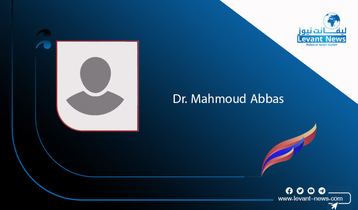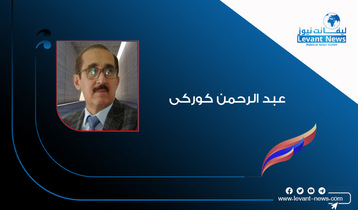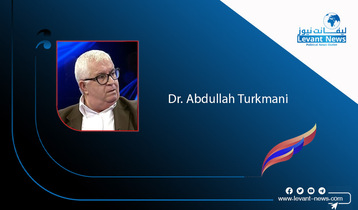-
Iran’s forgotten massacre

Earlier this month considerable media attention was devoted to the 30th anniversary of Iraq’s invasion of Kuwait in August 1990, an event with lasting consequences for the Middle East and the world. Two years before that, however – virtually unnoticed at the time and barely remembered since - there took place a series of mass state-organized killings in Iran.
July 1988 was in the middle of a long, hot summer both in Tehran and Baghdad. Ayatollah Khomeini had finally, albeit reluctantly, agreed to UN resolution 598, paving the way for a ceasefire with what he called “the infidel Baathist regime of Saddam Hussein” eight years after Iraq invaded Iran in the wake of its 1979 revolution. Iran had previously resisted all international efforts at mediation. Khomeini said he had drunk this “chalice of poison.”
In his new book, “Voices of a Massacre”*, Paris-based historian Nasser Mohajer reconstructs the story of that fateful period. It is still an “open file,” he writes. “Thousands were taken blindfolded to the gallows and thousands flogged, day after day, to admit and succumb.” The crime was unprecedented in modern Iranian history.
Six days after Khomeini accepted the ceasefire, 7,000 fighters of the Iraqi-backed opposition group, the Mojahedin-e Khalq (MeK), now called the National Liberation Army of Iran (NLA), under Iraqi air cover, crossed the Iranian border. It razed to the ground the town of Islamabad-e Gharb. Advancing further, Iraq ceased its air support and Iranian forces cut off NLA supply lines and counterattacked under cover of fighter planes and helicopter gunships. It was that assault that triggered the mass killings.
Most of the prisoners were either members of the MeK or Marxist political groups who had already stood trial and were serving their sentences - including for non-violent offences such as distributing newspapers and leaflets, taking part in demonstrations or collecting funds for prisoners' families. They had often spent long periods in solitary confinement.
Many were executed in Tehran’s two notorious prisons, Evin and Gohardasht on the orders of what became known as the “Death Commission.” Killings took place in other cities: Kermanshah, Shiraz and Isfahan. Precise numbers are still not available, but estimates, including by Amnesty International, have concluded that between four to five thousand men and women were killed that summer
Many were buried hurriedly in mass graves in various parts of Iran, including in Khavaran cemetery in southeast Tehran, where Forough Lofti found the corpse of her son Anoush. Most families only found out about these graves years later, but the government still prevents them from mourning on the sites for their loved ones.
This event is not well known, because Iran devoted considerable efforts to ensure a blackout, and also because there were many distractions regionally and globally: the Soviet Union began withdrawing from Afghanistan in May 1988 and a year later the Berlin Wall came down, signaling the end of the Cold War. And unlike the carnage of Srebrenica or the purges of General Pinochet's coup in Chile, there was little worldwide outrage, and no opportunity for justice and legal redress.
Testimonies gathered for Mohajer’s remarkable book include those of prisoners who survived. Initially they knew little of what was going on but quickly sensed something was afoot: visits were stopped, they no longer received newspapers and televisions were removed. “We were completely severed from the outside world,” recalled Anahita Rahmani. She overheard a female guard – a pasdar Revolutionary Guard - crying over the sight of victims clasping hands on the gallows. Inmates communicated by Morse code.
"Hanging" did not mean death by breaking the neck by dropping through a trap door, but stringing up the victim by the neck to suffocate. Some prisoners took 15 minutes to die. Overworked executioners requested firing squads but these were rejected on the basis that Sharia law required hanging for enemies of Allah. The real reason was that hanging was quieter than gunfire and would better preserve secrecy. Suicides proliferated.
Executions in Gohardasht took place in a ditch behind a wall surrounding the prison. Blindfolded young men in uniform were repeatedly spotted in the vicinity and the prison director was seen with a wheelbarrow full of rope. “Clearly something terrible was taking place,” recalled Iraj Mesdaghi, a rare survivor who ended up in Sweden.
Iranian officials rarely speak about the 1988 massacre but over the years occasional glimpses have been possible. One of the four clerics on the "Death Commission”, Mostafa Pourmohammadi, defended his role in an interview in 2018. Another involved Ayatollah Montazeri, formerly Khomeini’s designated successor. He published a memoir in 2001 which contains details of the massacre, including a copy of Khomeini's fatwa calling for the execution of Mojahedin as “fighters against God” and leftists as “apostates from Islam.”
Overall the book’s testimonies form a universal tribute to the human capacity for resilience and forbearance – as well as the ongoing search for justice. In the words of one critic: “Nasser Mohajer writes for the same reasons as George Orwell―’desire to see things as they are, to find out true facts and to store them up for the use of posterity.’”
*https://www.amazon.co.uk/Voices-Massacre-Untold-Stories-Death/dp/1786077779
IAN BLACK
You May Also Like
Popular Posts
Caricature
BENEFIT Sponsors BuildHer...
- April 23, 2025
BENEFIT, the Kingdom’s innovator and leading company in Fintech and electronic financial transactions service, has sponsored the BuildHer CityHack 2025 Hackathon, a two-day event spearheaded by the College of Engineering and Technology at the Royal University for Women (RUW).
Aimed at secondary school students, the event brought together a distinguished group of academic professionals and technology experts to mentor and inspire young participants.
More than 100 high school students from across the Kingdom of Bahrain took part in the hackathon, which featured an intensive programme of training workshops and hands-on sessions. These activities were tailored to enhance participants’ critical thinking, collaborative problem-solving, and team-building capabilities, while also encouraging the development of practical and sustainable solutions to contemporary challenges using modern technological tools.
BENEFIT’s Chief Executive Mr. Abdulwahed AlJanahi, commented: “Our support for this educational hackathon reflects our long-term strategic vision to nurture the talents of emerging national youth and empower the next generation of accomplished female leaders in technology. By fostering creativity and innovation, we aim to contribute meaningfully to Bahrain’s comprehensive development goals and align with the aspirations outlined in the Kingdom’s Vision 2030—an ambition in which BENEFIT plays a central role.”
Professor Riyadh Yousif Hamzah, President of the Royal University for Women, commented: “This initiative reflects our commitment to advancing women in STEM fields. We're cultivating a generation of creative, solution-driven female leaders who will drive national development. Our partnership with BENEFIT exemplifies the powerful synergy between academia and private sector in supporting educational innovation.”
Hanan Abdulla Hasan, Senior Manager, PR & Communication at BENEFIT, said: “We are honoured to collaborate with RUW in supporting this remarkable technology-focused event. It highlights our commitment to social responsibility, and our ongoing efforts to enhance the digital and innovation capabilities of young Bahraini women and foster their ability to harness technological tools in the service of a smarter, more sustainable future.”
For his part, Dr. Humam ElAgha, Acting Dean of the College of Engineering and Technology at the University, said: “BuildHer CityHack 2025 embodies our hands-on approach to education. By tackling real-world problems through creative thinking and sustainable solutions, we're preparing women to thrive in the knowledge economy – a cornerstone of the University's vision.”
opinion
Report
ads
Newsletter
Subscribe to our mailing list to get the new updates!




















